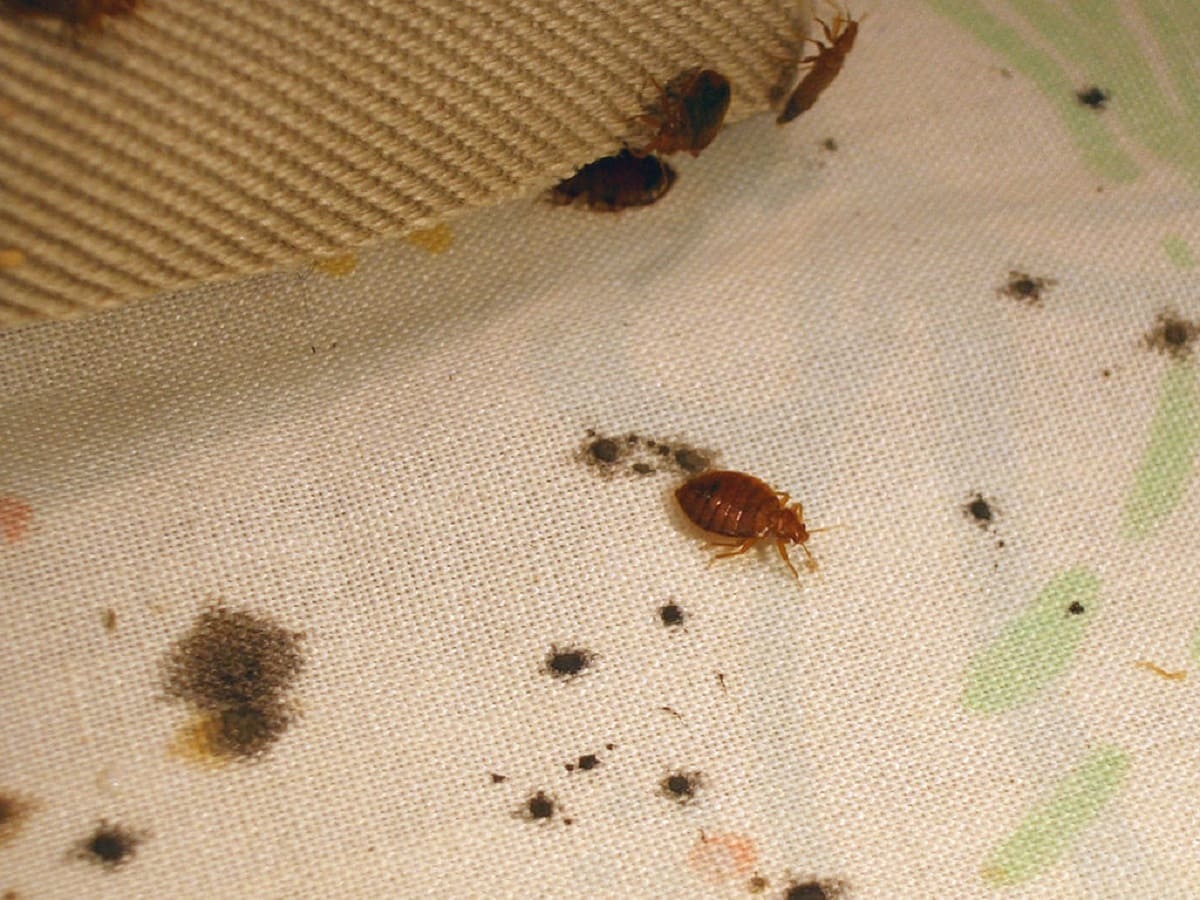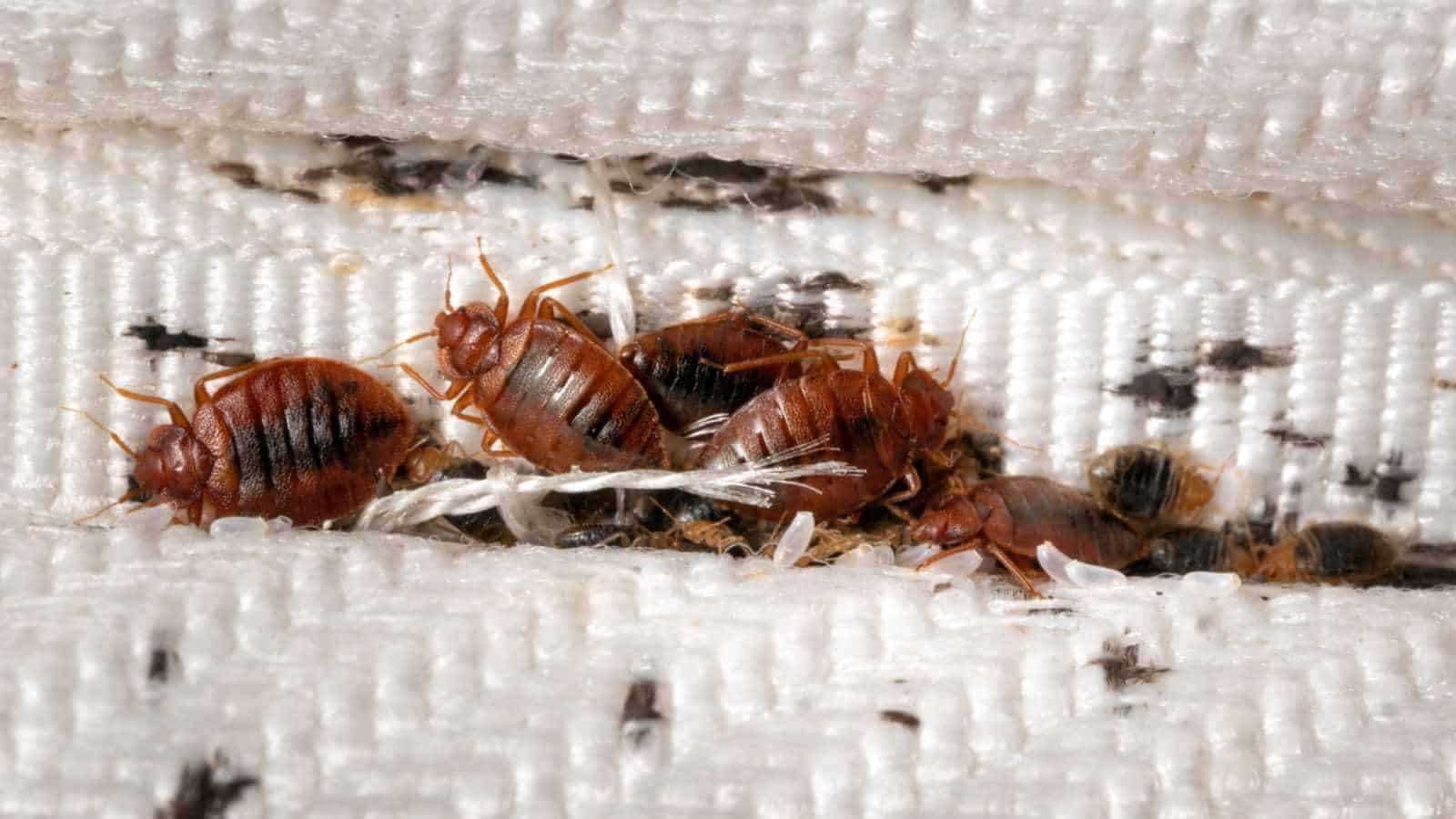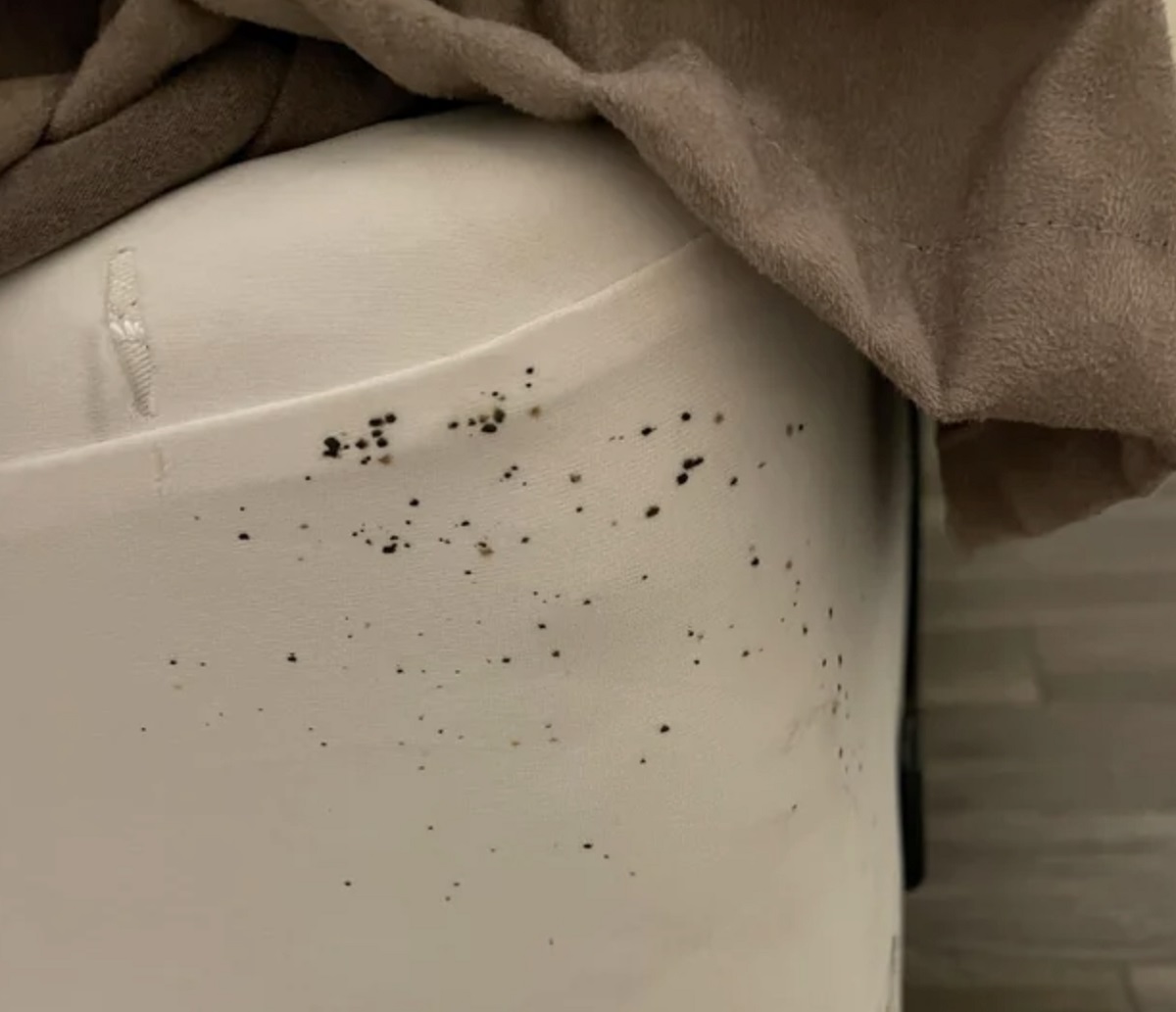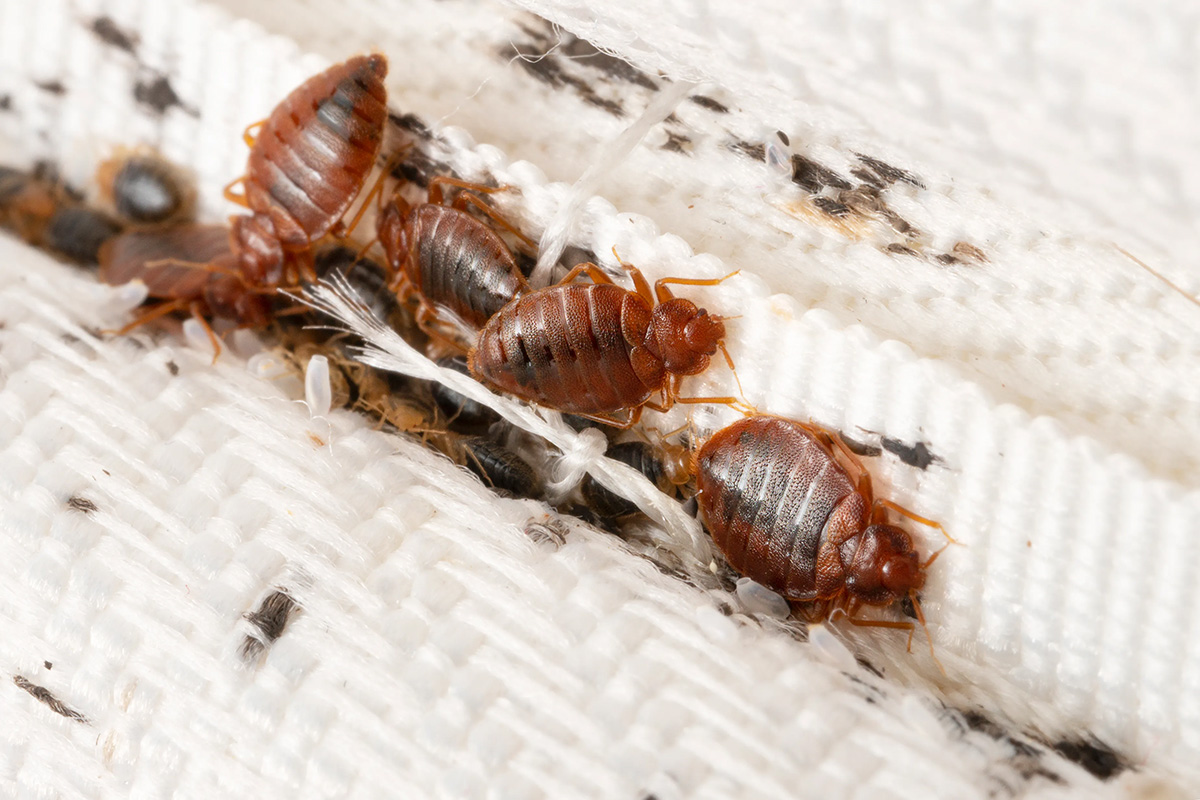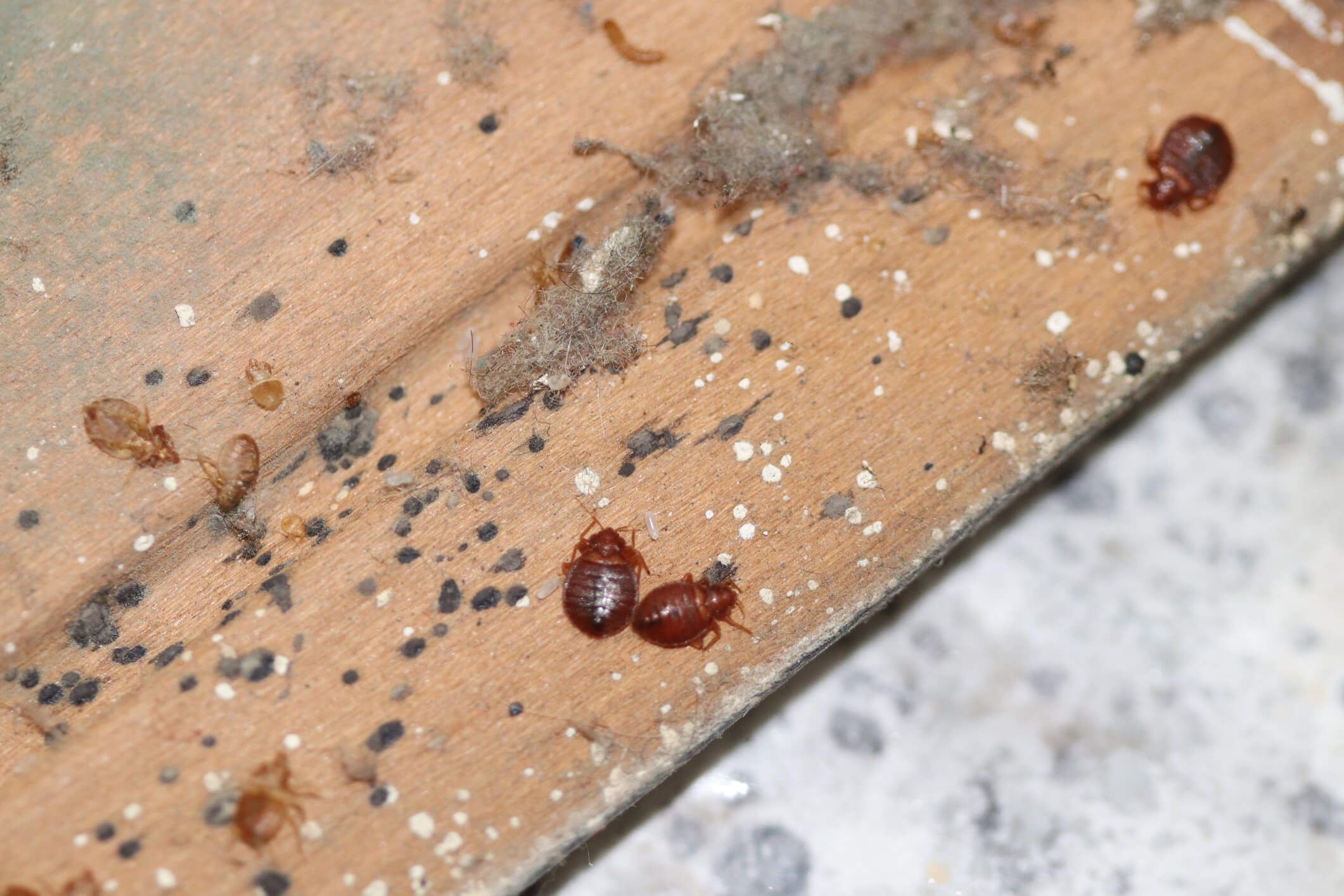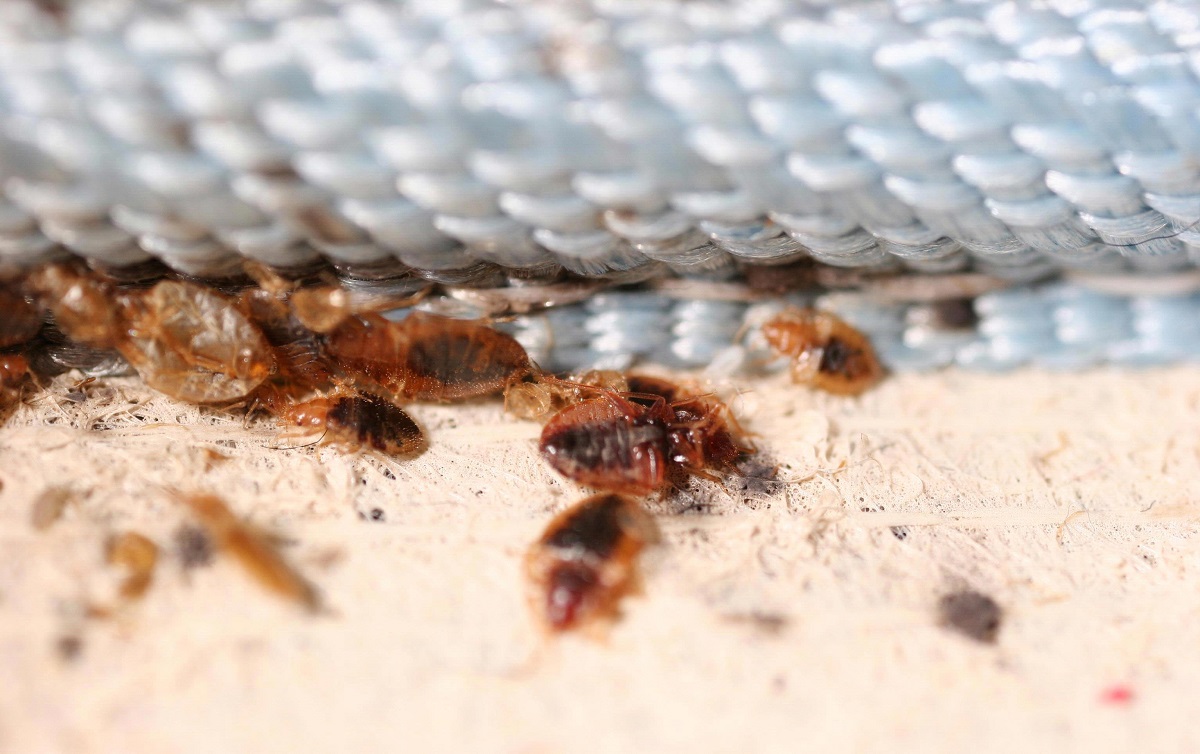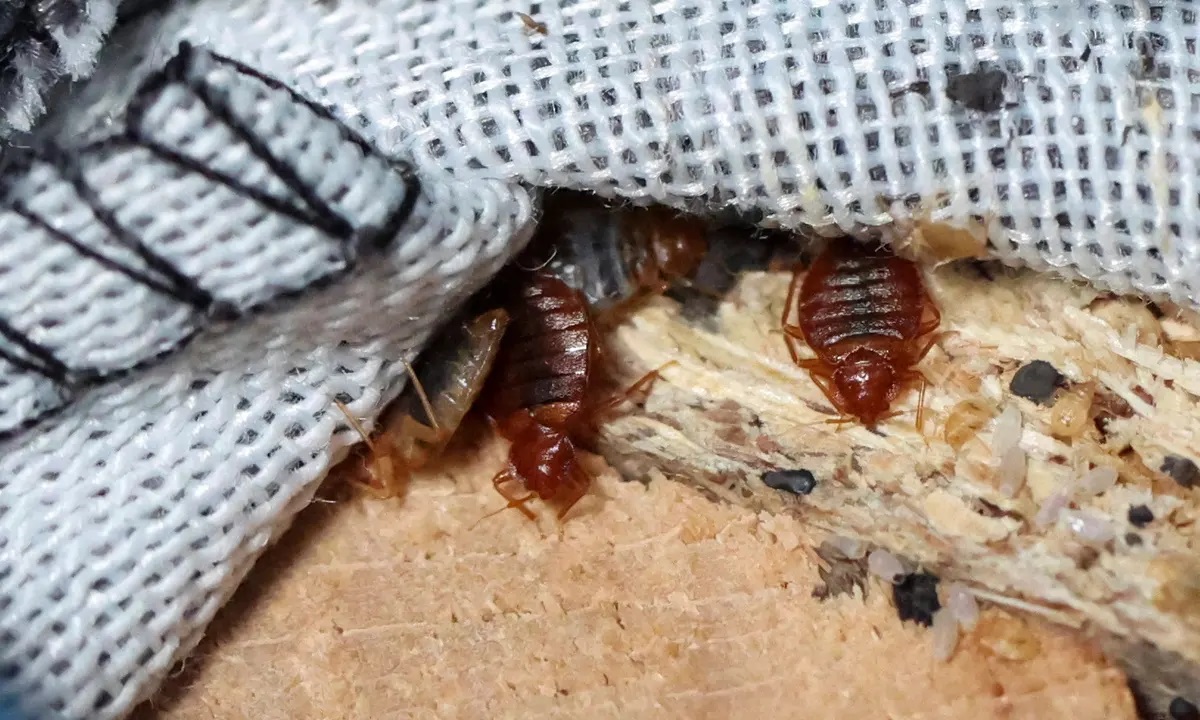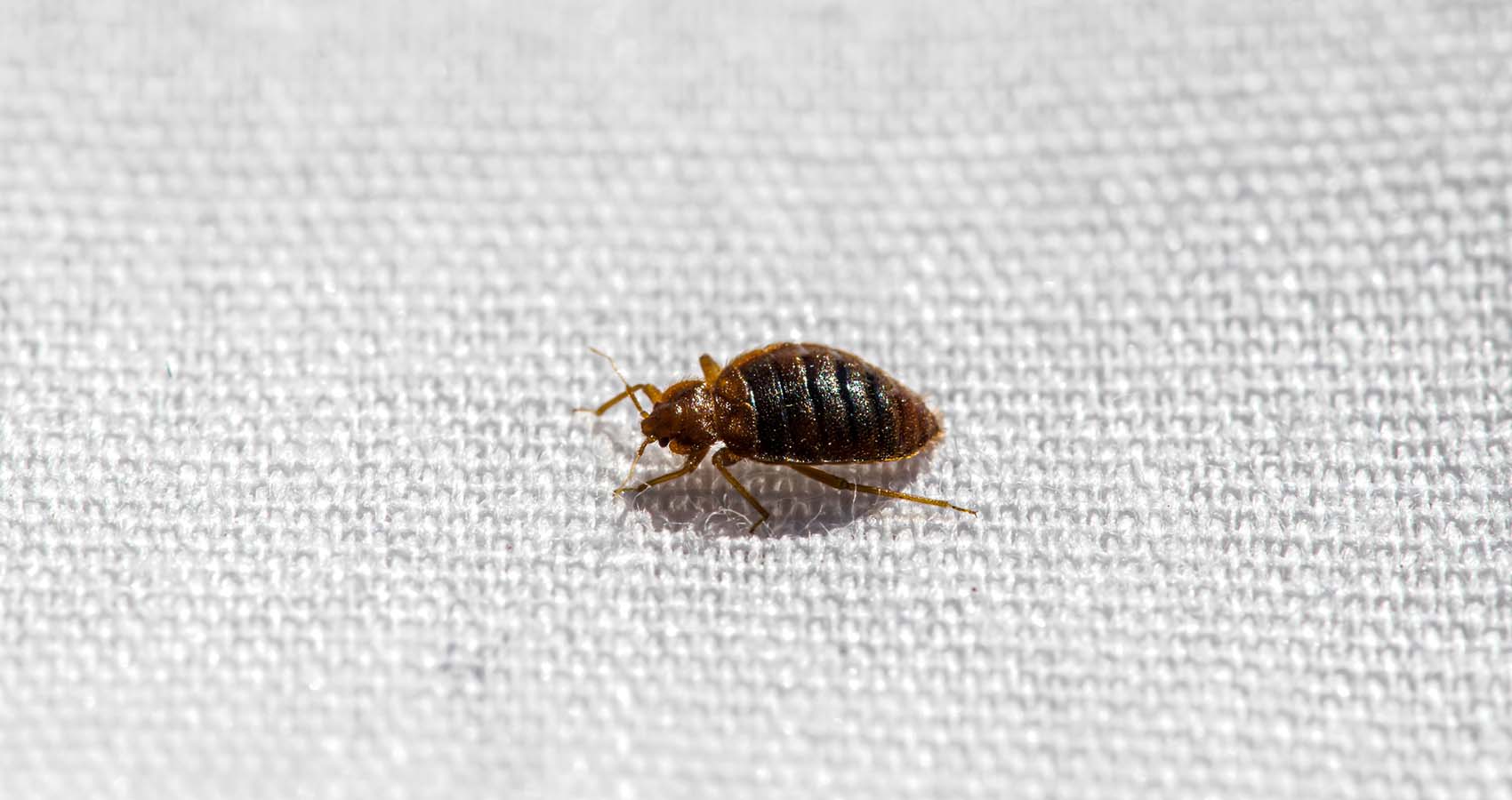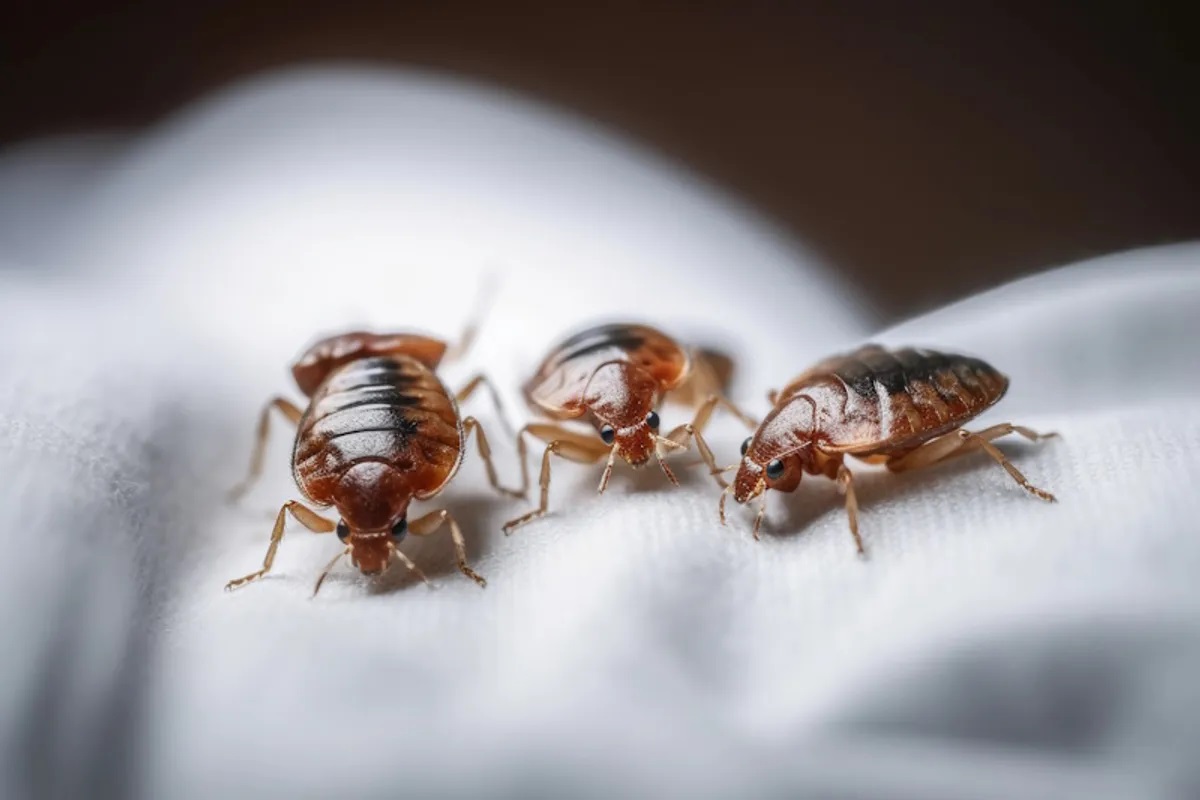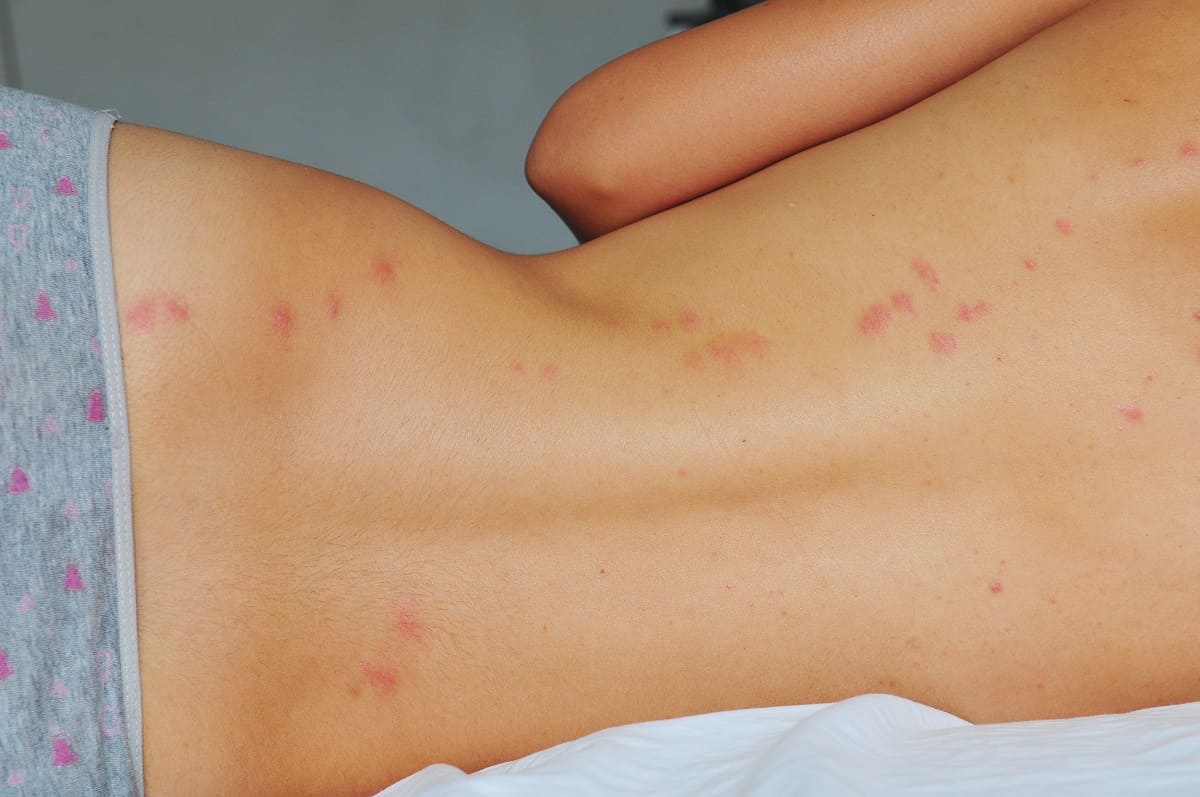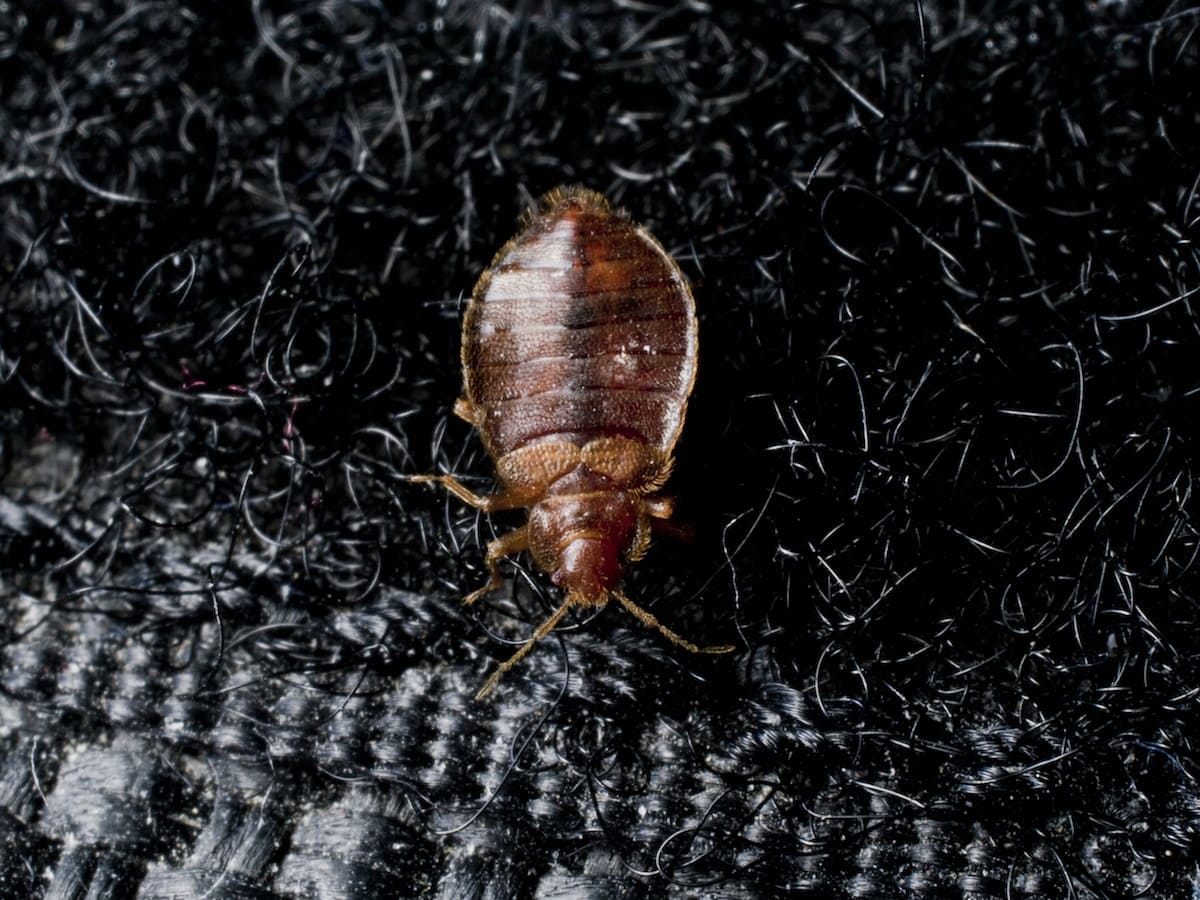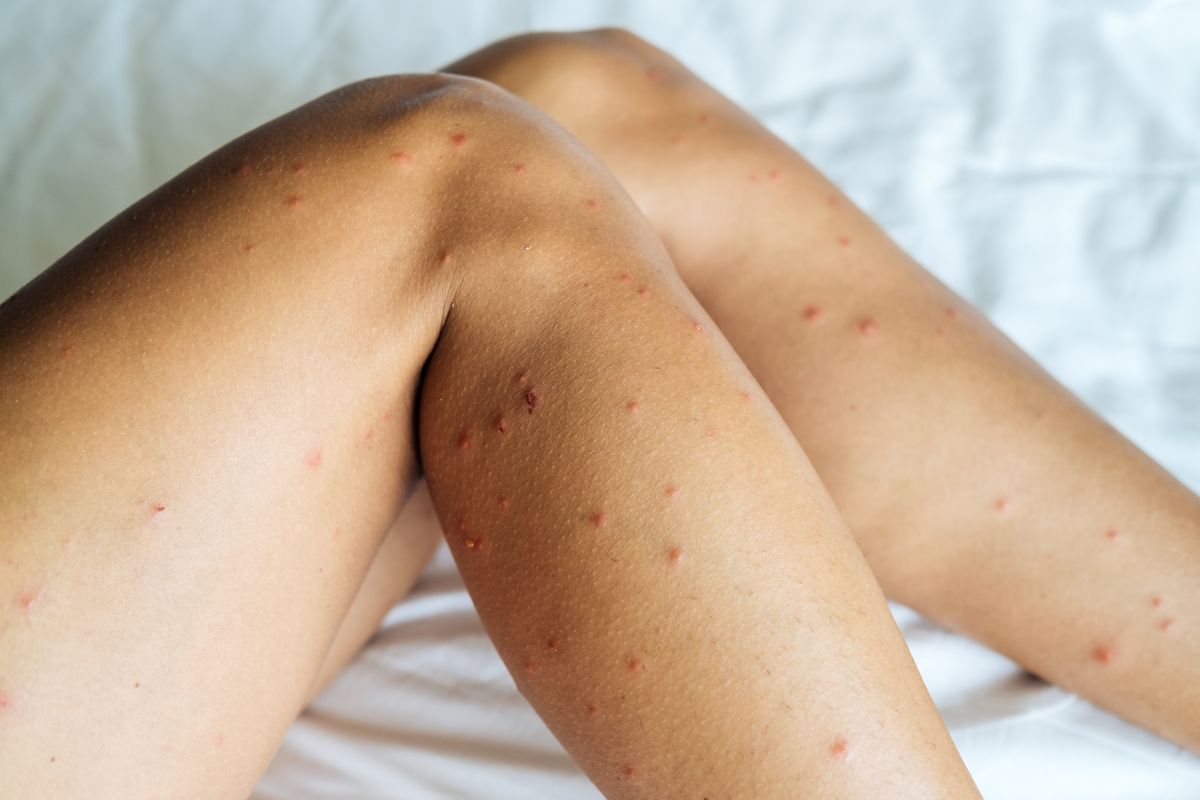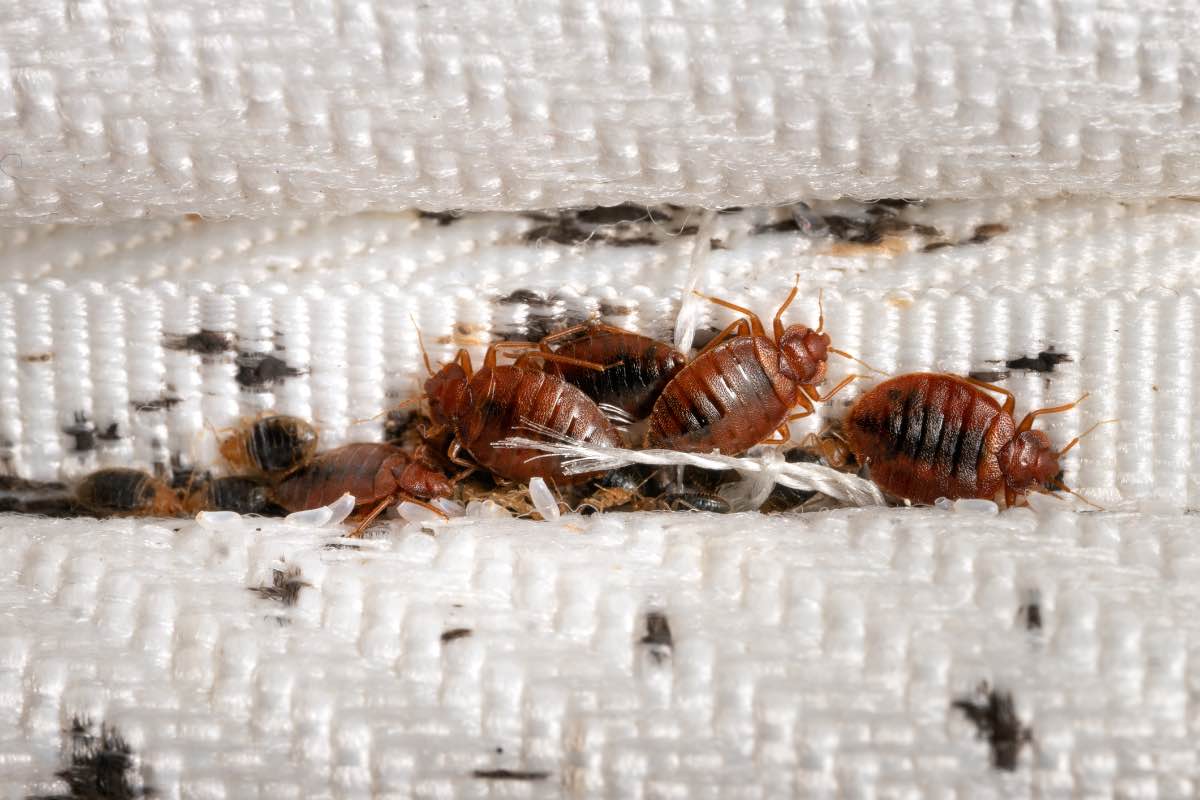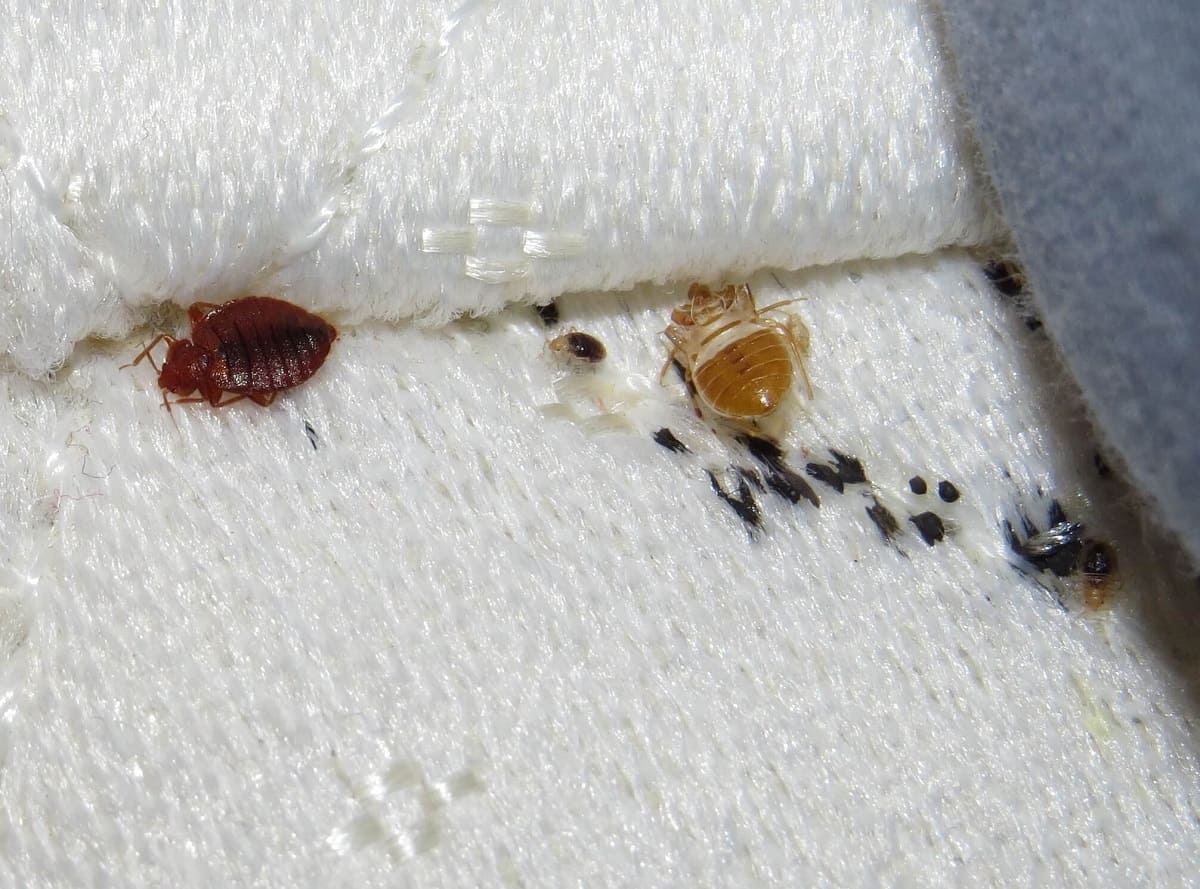Home>Furniture>Bedroom Furniture>How Do You Draw Bed Bugs Out Of Hiding?
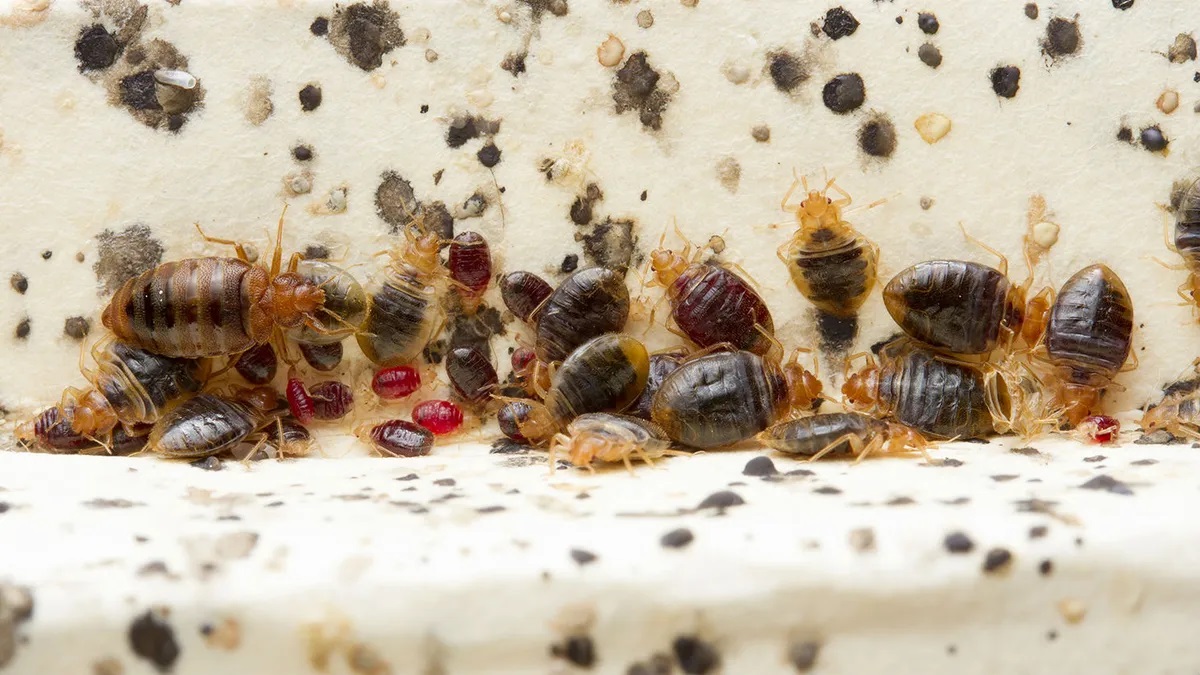

Bedroom Furniture
How Do You Draw Bed Bugs Out Of Hiding?
Modified: January 9, 2024
Looking to draw bed bugs out of hiding? Discover effective methods to get rid of these pests and protect your bedroom furniture.
(Many of the links in this article redirect to a specific reviewed product. Your purchase of these products through affiliate links helps to generate commission for Storables.com, at no extra cost. Learn more)
Introduction
Welcome to the world of bedroom furniture! Your bedroom should be a sanctuary, a place where you can relax and unwind after a long day. And one of the most important pieces of furniture in your bedroom is undoubtedly the bed. However, there’s something that can turn your peaceful retreat into a nightmare – bed bugs.
Bed bugs are small, flat, and parasitic insects that feed on the blood of humans and animals while they sleep. They are excellent at hiding and can infest mattresses, bed frames, and even nearby furniture. These pests are notorious for their ability to reproduce quickly and their resilient nature, making them a problem that can be difficult to eradicate.
In this article, we will explore how bed bugs behave, the signs of infestation, and most importantly, how to draw these pesky creatures out of their hiding places. Whether you’re dealing with an infestation or simply want to be prepared in case of a future incident, understanding bed bug behavior and effective methods to deal with them is crucial.
It’s important to note that while bed bugs are certainly a nuisance, they do not transmit diseases. Their bites, however, can cause itching, redness, and discomfort. Additionally, the presence of these pests can have a psychological impact, leading to anxiety and sleep disturbances.
So, let’s dive in and learn how to tackle bed bug infestations and protect your peace of mind.
Key Takeaways:
- Natural methods like vacuuming, steam cleaning, and essential oils can draw bed bugs out of hiding, but professional pest control may be necessary for severe infestations.
- Understanding bed bug behavior and early detection of infestation signs are crucial in effectively combating and preventing these pests from invading your sanctuary.
Read more: Where Do Bed Bugs Hide On Your Body
Understanding Bed Bugs and Their Behavior
Before we can effectively deal with bed bugs, it is essential to understand their behavior. Bed bugs are small, oval-shaped insects that belong to the family Cimicidae. They are primarily active at night and feed on the blood of humans and animals, using specialized mouthparts to pierce the skin and extract blood.
Bed bugs thrive in warm environments and are often found in areas where people sleep, such as beds, mattresses, and upholstered furniture. Contrary to what their name suggests, they can infest any room in a house, not just the bedroom. They can also hide in cracks, crevices, and electrical outlets, making it challenging to completely eliminate an infestation.
One of the reasons bed bugs are such successful pests is their ability to go unnoticed. They are skilled at hiding in tight spaces, such as mattress seams, bed frames, and headboards. Their flat bodies allow them to squeeze into small cracks and crevices, making detection and eradication difficult.
Bed bugs have a strong preference for human hosts and are attracted to the carbon dioxide we exhale and the warmth of our bodies. They can sense these signs from a distance and will crawl out of their hiding spots to feed. However, their bites are painless, and most people do not realize they have been bitten until red, itchy welts appear on their skin.
It’s important to note that infestations can occur regardless of cleanliness or socioeconomic status. Bed bugs are excellent hitchhikers and can be brought into homes through infested furniture, luggage, or clothing. They can also travel between apartments in multi-unit buildings, spreading rapidly if not addressed promptly.
Now that we have a better understanding of bed bug behavior, let’s explore the signs of infestation you should be aware of.
Signs of Bed Bug Infestation
Identifying a bed bug infestation early is essential for effective treatment. Here are some common signs to look out for:
- Bite marks: Bed bug bites typically appear as red, itchy welts on exposed areas of the body, such as the face, neck, arms, and legs. While their bites are not always noticeable right away, some people may develop an allergic reaction, leading to more severe symptoms.
- Bloodstains or dark spots: After feeding, bed bugs often leave behind small bloodstains on bedding or nearby furniture. These stains can appear as small dots or smears. You may also notice dark spots, which are bed bug excrement, on mattress seams or along baseboards.
- Eggshells or molted skins: As bed bugs mature, they shed their exoskeletons, leaving behind molted skins. These can often be found in crevices or hiding spots where the bed bugs reside. Additionally, you may come across tiny, translucent eggshells, about the size of a pinhead, indicating the presence of bed bugs.
- Sweet, musty odor: Bed bugs release pheromones, which can create a distinct, sweet, musty odor in infested areas. If you notice an unusual smell in your bedroom or other living spaces, it could be a sign of a bed bug infestation.
- Visible bed bugs: In severe cases, you may actually see live bed bugs crawling on your bedding, mattress, or furniture. Adult bed bugs are about the size of an apple seed and have a reddish-brown color. Nymphs, the younger bed bugs, are smaller and lighter in color
It’s important to remember that bed bugs are excellent at hiding, so these signs may not always be readily apparent. Regularly inspecting your sleeping area and surrounding furniture can help you catch an infestation early.
If you suspect a bed bug infestation, it’s crucial to take immediate action to prevent the problem from worsening. In the next section, we will explore why bed bugs prefer hiding and how to draw them out of their hiding spots.
Why Bed Bugs Hide
Bed bugs are master hide-and-seek players, and understanding why they prefer hiding can help in devising effective strategies to eliminate them. Here are a few reasons why bed bugs choose to hide:
- Protection: Bed bugs are naturally nocturnal and prefer to come out to feed during the night when their hosts are asleep. By hiding in cracks, crevices, and other secluded spots during the day, they can avoid detection and potential harm.
- Security: Dark, tight spaces provide bed bugs with a sense of security. They can squeeze into the smallest of cracks, making it difficult to locate and eliminate them. Their flat bodies allow them to maneuver into narrow gaps, such as those found in mattress seams or behind baseboards.
- Warmth: Bed bugs are attracted to warmth. They seek shelter in areas where they can find a stable temperature, such as in mattresses, bedding, and upholstered furniture. These warm spots provide a comfortable environment for bed bugs to thrive and reproduce.
- Accessibility to hosts: Bed bugs are smart pests and understand that being close to their human hosts increases their chances of obtaining a blood meal. By hiding in areas near the bed, such as bed frames or headboards, they can easily crawl out and feed on their unsuspecting victims at night.
Understanding why bed bugs hide helps us devise strategies to draw them out of their hiding spots. The next section will explore natural ways to encourage bed bugs to leave their hiding places, making it easier to target them for eradication.
Use a flashlight to inspect hiding spots like mattress seams, bed frames, and furniture. Vacuum thoroughly and use a steamer to kill bed bugs and their eggs. Consider professional pest control for severe infestations.
Natural Ways to Draw Bed Bugs Out of Hiding
While professional pest control methods are often necessary for severe infestations, there are several natural ways you can try to draw bed bugs out of their hiding spots. These methods can be effective, especially when combined with other treatment approaches. Here are some natural ways to encourage bed bugs to leave their hiding places:
- Vacuuming: Regularly vacuuming your mattress, box springs, and surrounding areas can help remove bed bugs and their eggs. Be sure to use a vacuum with a HEPA filter to prevent bed bugs from escaping and spreading.
- Steam cleaning: Bed bugs are sensitive to heat, and steam cleaning can be an effective way to kill them. Steam clean your mattress, furniture, and other infested areas, making sure to reach every crack and crevice.
- Encase your mattress: Encasing your mattress and box spring in special bed bug-proof covers can help trap bed bugs inside and prevent new ones from infesting your sleeping area. This denies them access to their food source, forcing them to come out of hiding in search of a host.
- Washing and drying: Wash and dry infested bedding, clothing, and curtains on high heat settings. The high temperatures will kill bed bugs at all stages of their life cycle, including eggs.
- Diatomaceous earth: Diatomaceous earth is a natural powder made from fossilized remains of diatoms. It is sharp and abrasive, causing the bed bugs’ exoskeleton to dry out and eventually kill them. Apply diatomaceous earth around the perimeter of your bed, cracks, and other infested areas.
- Essential oils: Some essential oils, such as tea tree oil, lavender oil, and peppermint oil, are known to repel bed bugs. Dilute these oils with water and spray in infested areas or use them as a natural bed bug deterrent.
These natural methods may help in drawing bed bugs out of their hiding places, but they may not completely eliminate an infestation. It’s important to combine these approaches with professional pest control methods for more severe infestations or persistent problems.
In the next section, we will explore the use of heat as a highly effective method to draw bed bugs out of their hiding spots.
Read more: How Do You Check For Bed Bugs
Using Heat to Draw Bed Bugs Out of Hiding
Heat treatment is a proven and highly effective method for drawing bed bugs out of their hiding spots and eliminating them. Bed bugs are sensitive to high temperatures, so exposing them to heat can force them to come out and make them more susceptible to treatment. Here’s how you can use heat to tackle a bed bug infestation:
- Hot washing and drying: Wash infested bedding, clothing, and fabrics in hot water and dry them on high heat. The heat will kill bed bugs and their eggs, effectively clearing them from these items.
- Steam treatment: Use a steamer with a high temperature setting to treat infested areas, such as mattresses, box springs, and furniture. Direct the steam into cracks, crevices, and other hiding spots to kill bed bugs on contact.
- Hot box treatment: Place infested items, such as clothing, shoes, and small furniture, into a tightly sealed container or bag. Use a portable heating device, such as a hot box or a hairdryer set to high heat, to raise the temperature inside the container and kill the bed bugs.
- Professional heat treatment: For severe infestations or stubborn bed bug problems, consider hiring a professional pest control company that specializes in heat treatment. They will use specialized equipment to raise the temperature in your home to lethal levels for bed bugs, ensuring complete eradication.
It’s important to note that heat treatment should be done cautiously, following safety guidelines, and using appropriate equipment. High temperatures can cause damage to certain items, so it’s crucial to consult professionals or carefully read product instructions before attempting heat treatment.
Using heat to draw bed bugs out of their hiding places is an effective and chemical-free method. However, for larger infestations, in multi-story buildings, or if you are unsure about performing heat treatment yourself, it’s best to consult a professional pest control company for thorough heat treatment.
In the next section, we will explore professional pest control methods that can help eradicate bed bugs effectively.
Professional Pest Control Methods
When dealing with a severe or persistent bed bug infestation, professional pest control methods are often the most effective solution. Pest control professionals have the knowledge, experience, and tools to effectively eliminate bed bugs from your home. Here are some common professional pest control methods used for bed bug eradication:
- Chemical treatments: Pest control technicians may use insecticides specifically formulated to target bed bugs. These chemicals are applied to infested areas, cracks, crevices, and other hiding spots to kill bed bugs on contact. It is important to hire licensed professionals who can safely and effectively handle these chemicals.
- Steam or heat treatment: Pest control companies may also use industrial-grade steamers or specialized heat treatment equipment to raise the temperature in the infested areas to lethal levels for bed bugs. This method penetrates deep into furniture, mattresses, and other hard-to-reach areas to eliminate bed bugs at all life stages.
- Vacuuming and cleaning: Pest control professionals may use powerful vacuum cleaners to physically remove bed bugs, eggs, and debris from infested areas. Thorough cleaning of infested items and surrounding areas is essential to ensure the removal of any remaining bed bugs.
- Monitoring and follow-up: Pest control companies may set up monitoring devices to assess the effectiveness of the treatment and detect any remaining bed bug activity. They may also schedule follow-up visits to ensure complete eradication and provide recommendations for prevention.
- Integrated Pest Management (IPM): Some pest control companies adopt an Integrated Pest Management approach, which focuses on long-term prevention and non-chemical control methods. This may include sealing cracks and crevices, installing bed bug-proof mattress and box spring encasements, and providing education on how to prevent future infestations.
It’s important to choose a reputable pest control company with experience in dealing with bed bug infestations. Check reviews, ask for recommendations, and inquire about their methods and guarantees before making a decision.
Remember, professional pest control methods should always be used with caution and by trained professionals to ensure the safety of you, your family, and your pets.
Now, armed with a better understanding of professional pest control methods, you can confidently take the necessary steps to eliminate bed bugs and reclaim your home.
Conclusion
Dealing with a bed bug infestation can be a distressing experience, but with knowledge and the right approach, you can effectively eliminate these pesky pests and restore peace to your home.
Understanding the behavior of bed bugs, recognizing the signs of infestation, and knowing why they prefer hiding are key factors in effectively combating these insects. Natural methods, such as vacuuming, steam cleaning, and using essential oils, can help draw bed bugs out of their hiding spots. Additionally, heat treatment, whether through hot washing and drying or professional heat treatment, is a highly effective method to eliminate bed bugs at all life stages.
In cases of severe infestations or persistent problems, professional pest control methods, such as chemical treatments, steam or heat treatments, and integrated pest management, offer comprehensive solutions. Seeking the expertise of licensed pest control professionals can ensure a thorough and successful eradication of bed bugs from your home.
Remember, prevention is key. To reduce the risk of future infestations, implement measures such as regular cleaning, sealing cracks and crevices, and using bed bug-proof mattress and box spring encasements. Stay vigilant when traveling or acquiring used furniture, as these are common ways for bed bugs to hitchhike into your home.
While it can be frustrating to deal with bed bugs, it’s important to approach the situation calmly and methodically. Ridding your home of bed bugs takes time and effort, but with persistence and the right strategies, you can reclaim your space and rest easy once again.
So take control of your bedroom furniture and keep bed bugs at bay. Your sanctuary should be a place of comfort and relaxation, free from unwelcome invaders.
Frequently Asked Questions about How Do You Draw Bed Bugs Out Of Hiding?
Was this page helpful?
At Storables.com, we guarantee accurate and reliable information. Our content, validated by Expert Board Contributors, is crafted following stringent Editorial Policies. We're committed to providing you with well-researched, expert-backed insights for all your informational needs.
